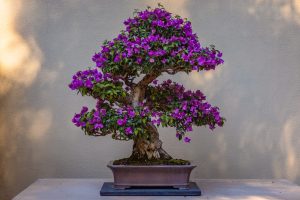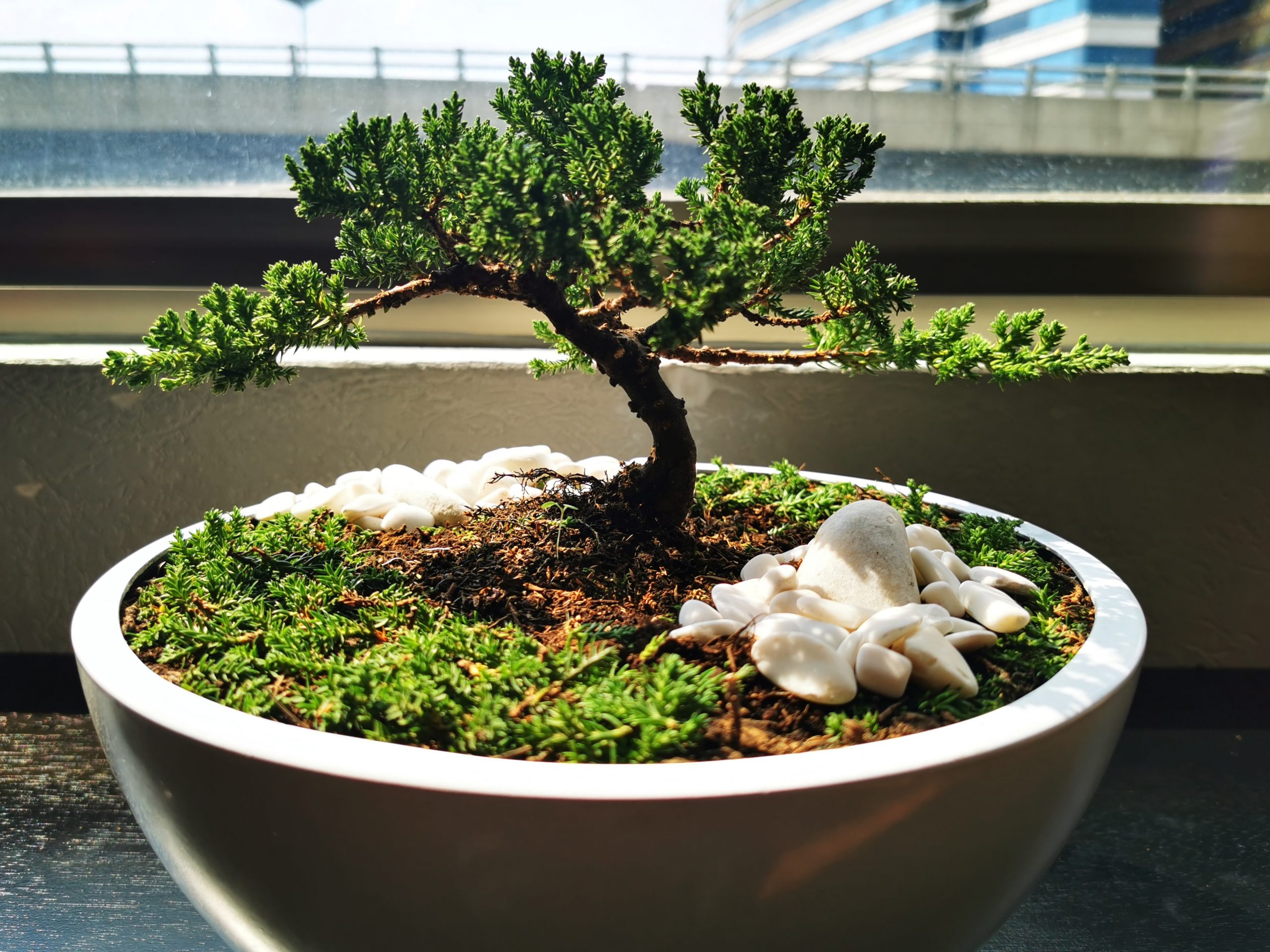Last Updated on April 10, 2024 by Real Men Sow
The ultimate goal of growing a Bonsai is to create a miniaturized but realistic representation of nature in the form of a tree. This takes a lot of time and careful preparation. This means you should understand the basics of bonsai tree care.
History of Bonsai Trees: Where it all began
The Japanese term Bon-sai literally means “planted inside a container”. This art form was derived from an ancient Chinese practice of horticulture, which was later redeveloped by Japanese Zen Buddhism. It has been around for over a thousand years. Bonsai plants are not genetically dwarfed. In fact, you can grow them from any tree species. Bonsai tree care is a highly valued skill among gardeners. It is difficult to maintain a bonsai tree to a high standard.

How To Identify Bonsai Trees
If you don’t know which species your bonsai tree is, it will be difficult to care for it effectively. It is easy to determine if your bonsai tree is a coniferous or broad-leafed tree. Conifers, on the other hand, have flat broad-leafed leaves that can be either evergreen or deciduous (which sheds its leaves every year). It’s a bit more difficult to choose the right type based on their leaf size, shape, and colour.
Growing Bonsai Trees
Watering Your Bonsai
You should ask the obvious questions about how often and how many gallons of water you should be giving your bonsai tree. Bonsai tree care is a very attentive job. Because every tree is unique, you need to be able to assess its situation. When the soil becomes slightly dry, it’s time to water. To ensure bonsai tree health, make sure you cover all soil. This will allow you to water the entire root system. You should not water your tree on a schedule or systematically. This is because you need to consider climate change and how soil dries over time. You could end up causing root damage if you only decide to do waterings as scheduled instead of being mindful of the weather.
Positioning And Lighting
The species of bonsai trees will have different light requirements. They are trees, and their natural habitat is outside. Therefore they require a lot light. Unless you have exceptional skills, bonsai trees cannot survive indoors under artificial lighting. It is best to place your bonsai tree in natural sunlight.
Pruning Bonsai Trees
Pruning bonsai trees is important for maintaining their shape and health. Trimming back long shoots is a good way to handle new shoots. Long shoots transmit all energy to the tips and weaken thin branches. You should only keep one or two sets and then trim any other leaves with sharp scissors. To preserve the unique shape and character of your tree, it is best to leave gaps between branches. It is easier to prune often and prevent the shape from becoming too overgrown or lost.
What to Feed your Bonsai Tree
The size of your bonsai tree will determine what you feed it. Granular bonsai feed is best for larger trees because they are more susceptible to being washed away from smaller ones. You should choose a liquid feed if you have smaller ones. It will not get washed away and it will suit if you water your bonsai roots by saturating them as recommended. It is best to dilute liquid feeds with more water than what the manufacturer recommends.
Best Soil for your Bonsai Tree
Bonsai trees are dependent on the soil they are given. You can purchase ready-mixed soils online, but it’s also possible to make your own. Making your own bonsai soil can save you money and give you more control over the mix. Good drainage, good water retention, and good aeration are the three main components of perfect bonsai soil.
Soil Mixture
Bonsai soil should contain akadama and potting compost. Akadama, a Japanese hard-baked ceramic clay that is specially made for bonsai tree maintenance. Although potting compost is not ideal on its own since it does not drain well and doesn’t aerate well. However, when used in a bonsai soil mix, it can be great. Fine gravel is essential for drainage and aerating. These three ingredients together will create the best soil for your bonsai. You should mix them differently according to the bonsai tree’s type (deciduous and coniferous tree species). Remember that you should use less potting mixture for coniferous trees and more akadama, making up a 3:1:2 ratio of akadama, potting mix, and fine gravel for coniferous plants. Use a 2:1:1 ratio for deciduous bonsai.
How To Care For Bonsai Tree: Prevention of Diseases
It may seem obvious but giving your bonsai trees all the care they need will make it more resistant to disease. This will help it fight off various viruses, fungi and illnesses. It is important to keep the soil in a healthy condition for your bonsai tree. This includes aerating it and removing any fallen leaves, flowers, or other items. To ensure that your bonsai tree doesn’t become pot bound, you can fertilize it from time to time.
How to Repot your Bonsai Tree
It is difficult to properly care for a bonsai plant. It is not only important to ensure the tree has the proper drainage.
It is vital to repot your bonsai tree in order to keep it healthy. Repotting your bonsai tree will help replenish its environment and maintain its nutrient levels. It will not make your Bonsai smaller, but it will give it the nutrients it needs to thrive. Check the roots to determine if it’s time to repot your bonsai. If you find lots of roots but little soil, it’s time to repot. Use a rook hook to remove the roots that are long. They should hang down from the root ball.
How to Choose the Right Pot
Base criteria is the correct measurements for your bonsai. As you work towards adapting your bonsai roots, it is essential that you have the right depth. Once you’ve determined the size and shape you want for your pot, you can decide on the material. Ceramic, porcelain, and stone are the most popular choices, but there are many options. You can also choose glass, concrete, metal, or plastic. You should be careful when repotting bonsai in metallic pots. Some can emit harmful toxins.
It is also important to consider the gender of your bonsai. This is probably the most important aspect of buying a new pot. Bonsai can be characterized by strong roots, dense branches and strong roots. Smooth bark, graceful curves and sparse branches are examples of femininity. You can choose a pot that complements and matches your bonsai gender. A feminine pot may have smooth lines and delicate feet. Contrarily, a masculine pot might have sharp lines and deep colors.

